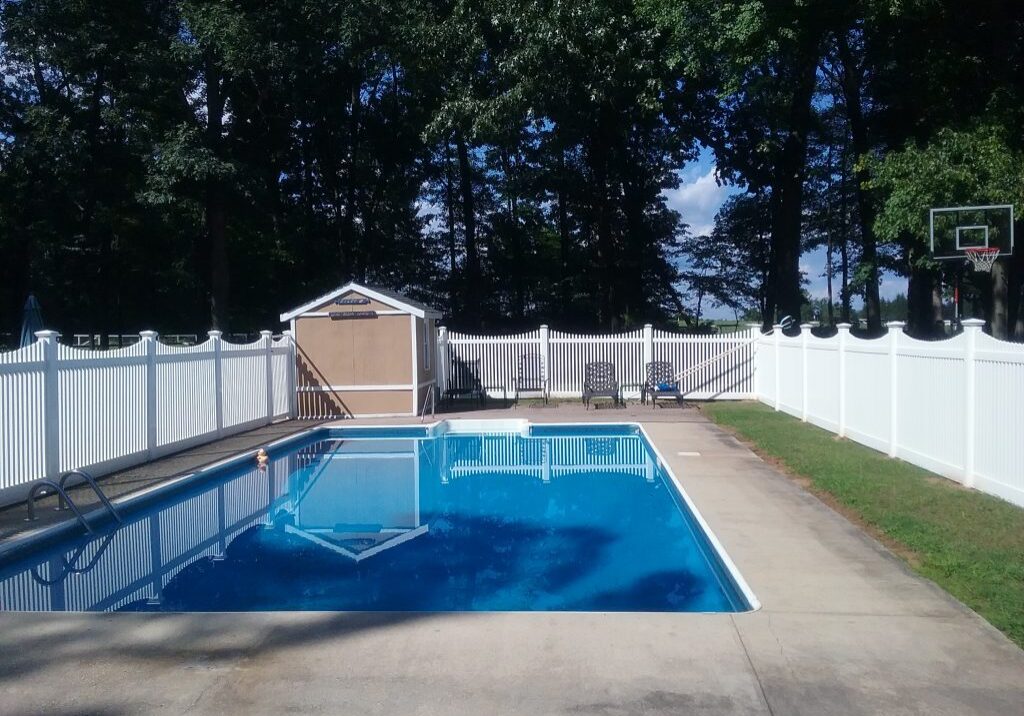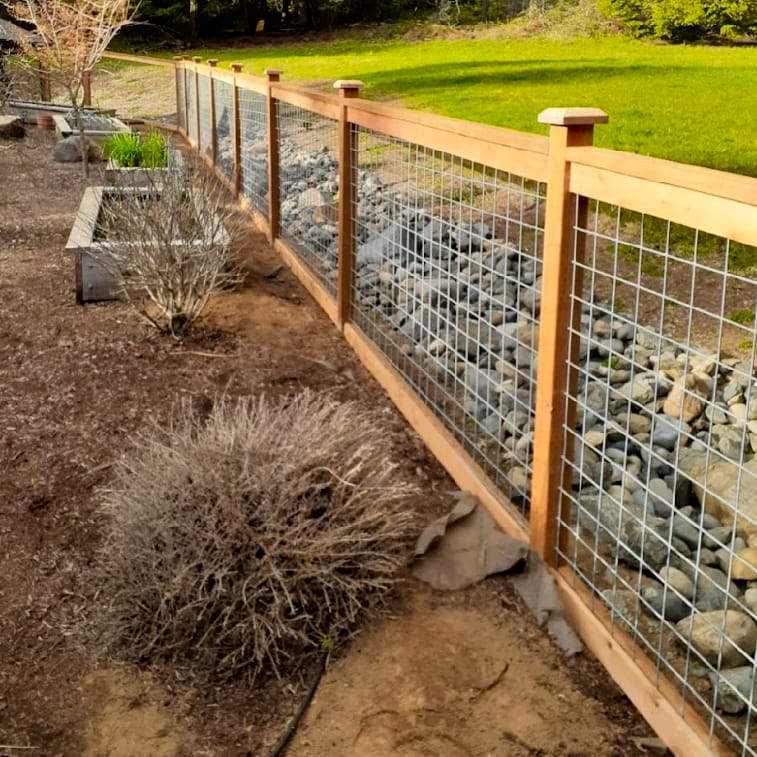All Categories
Featured
When securing your home, picking the appropriate fence height is important for both privacy and security. The elevation of your fence plays a substantial duty in figuring out exactly how efficient it will be at protecting your home or organization from trespassers. While a tall fencing may appear like the very best choice, the suitable elevation depends upon several variables, consisting of security demands, regional regulations, and the products utilized. Listed below, we'll outline vital factors to consider to assist you select the excellent fence height for optimal safety and security.
![]()
If you stay in a community regulated by a house owners' organization (HOA), you ought to likewise evaluate any kind of specific standards they have for fencing elevation, design, and materials. Sticking to these policies ensures you avoid lawful problems and keep a good partnership with your next-door neighbors.
Taller fencings are harder to range and can significantly decrease the possibility of burglaries. Including attributes like sharp tops, barbed cable, or perhaps electrical fence can better increase the obstacle's safety. A fence that gets to 8 feet or greater is usually effective at stopping most people from quickly leaping over it.
![]()
Wood Fences: While wood fencings give personal privacy, they can be very easy to climb up, particularly if there are no anti-climb attributes. For maximum safety, take into consideration a wooden fence that's 6 to 8 feet high with sharp tops or trellis extensions that make it more difficult to scale. Chain-Link Fences: Chain-link fencings are commonly a lot more budget friendly and long lasting than wood, and they can be built to the required elevation for security. To enhance deterrence, think about including barbed or razor cord on top. These features dissuade climbing up and make the fence more tough to violation. Wrought Iron Fences: Wrought iron fencings are usually utilized for high-security purposes because of their strength and sturdiness. Their vertical bars make it difficult to climb up, and they can be created to 6 to 8 feet high with added spikes or ornamental anti-climb features to more safeguard the border. Plastic Fencings: Plastic is an exceptional selection if you require a strong, personal fencing, yet like wood, vinyl fences may require added height or safety attributes to deter climbing up. Go with a fencing that goes to the very least 6 feet high to make sure personal privacy and protection. Each material supplies different advantages in regards to looks, longevity, and upkeep, so it is essential to consider your specific requirements and choices when choosing a fence.
Anti-Climb Features: Installing pointed or sharp tops, trellis extensions, or safety spikes on top of the fencing makes it harder for anyone to scale the fence. These attributes serve as a strong deterrent to potential burglars. Barbed or Razor Wire: Including barbed cable or razor wire at the top of your fencing enhances security substantially. This is generally utilized in high-security locations, such as industrial homes, yet can likewise be an excellent choice for properties in risky areas. Electric Fencing: For top-level security, you might wish to think about including an electric fence to your residential property. Electric secure fencing, when set up effectively, can develop a solid deterrent while remaining reasonably very discreet. It delivers a light shock to any individual that tries to climb up the fencing or touch. Combining height with these extra features guarantees that your fencing gives the greatest level of protection.
Balancing the need for personal privacy and safety while preserving the visual appeal of your building can aid you choose the appropriate elevation and material for your fencing. See to it that your fencing enhances the total style of your home and doesn't adversely impact the visual appeal.
![]()
By carefully taking into consideration all these components, you can develop a secure, personal, and attractive border around your property that uses both satisfaction and protection.

- Understand Local Laws and Zoning Laws. The very first step in picking your fence height is to acquaint on your own with neighborhood policies. Many districts have zoning legislations that dictate the optimum permitted height for fences, particularly ahead backyards and along residential property lines. Usually, front backyard fences are limited to 3 to 4 feet, while backyard fences can be as tall as 6 to 8 feet or more. Some areas might call for a license for fencings over a certain height, so it's crucial to inspect with your regional zoning workplace prior to beginning construction.
If you stay in a community regulated by a house owners' organization (HOA), you ought to likewise evaluate any kind of specific standards they have for fencing elevation, design, and materials. Sticking to these policies ensures you avoid lawful problems and keep a good partnership with your next-door neighbors.
- Figure Out the Desired Level of Safety And Security. The level of security you require is a significant aspect in identifying the optimal fence elevation. If you're looking to prevent laid-back intruders or maintain kids and pet dogs inside the backyard, a fence between 4 to 6 feet may be sufficient. For higher safety requirements-- such as protecting against robbers or guaranteeing security in high-crime locations-- you may need a taller fence. A fence elevation of 6 to 8 feet is generally recommended for optimal safety and security.
Taller fencings are harder to range and can significantly decrease the possibility of burglaries. Including attributes like sharp tops, barbed cable, or perhaps electrical fence can better increase the obstacle's safety. A fence that gets to 8 feet or greater is usually effective at stopping most people from quickly leaping over it.
- Pick the Right Material for Your Fencing. The material of your fencing plays an important duty in its capacity to supply safety. While taller fences are much better for protection, the type of product you make use of can boost or prevent the performance of the elevation. Here are some preferred fencing products for protection:

Wood Fences: While wood fencings give personal privacy, they can be very easy to climb up, particularly if there are no anti-climb attributes. For maximum safety, take into consideration a wooden fence that's 6 to 8 feet high with sharp tops or trellis extensions that make it more difficult to scale. Chain-Link Fences: Chain-link fencings are commonly a lot more budget friendly and long lasting than wood, and they can be built to the required elevation for security. To enhance deterrence, think about including barbed or razor cord on top. These features dissuade climbing up and make the fence more tough to violation. Wrought Iron Fences: Wrought iron fencings are usually utilized for high-security purposes because of their strength and sturdiness. Their vertical bars make it difficult to climb up, and they can be created to 6 to 8 feet high with added spikes or ornamental anti-climb features to more safeguard the border. Plastic Fencings: Plastic is an exceptional selection if you require a strong, personal fencing, yet like wood, vinyl fences may require added height or safety attributes to deter climbing up. Go with a fencing that goes to the very least 6 feet high to make sure personal privacy and protection. Each material supplies different advantages in regards to looks, longevity, and upkeep, so it is essential to consider your specific requirements and choices when choosing a fence.
- Include Safety And Security Features for Additional Defense. While elevation is crucial, including extra safety and security functions to your fencing can raise its effectiveness. Think about the complying with additions:
Anti-Climb Features: Installing pointed or sharp tops, trellis extensions, or safety spikes on top of the fencing makes it harder for anyone to scale the fence. These attributes serve as a strong deterrent to potential burglars. Barbed or Razor Wire: Including barbed cable or razor wire at the top of your fencing enhances security substantially. This is generally utilized in high-security locations, such as industrial homes, yet can likewise be an excellent choice for properties in risky areas. Electric Fencing: For top-level security, you might wish to think about including an electric fence to your residential property. Electric secure fencing, when set up effectively, can develop a solid deterrent while remaining reasonably very discreet. It delivers a light shock to any individual that tries to climb up the fencing or touch. Combining height with these extra features guarantees that your fencing gives the greatest level of protection.
- Take Into Consideration Personal Privacy and Aesthetic Preferences. While safety and security ought to be your primary concern, it's also vital to take into consideration the visual charm of your fence. Tall fences might give safety and security, but they can occasionally show up enforcing or hostile. If privacy is an issue, a solid wood or plastic fencing can provide both safety and seclusion, while a functioned iron fencing offers safety with an open sight.
Balancing the need for personal privacy and safety while preserving the visual appeal of your building can aid you choose the appropriate elevation and material for your fencing. See to it that your fencing enhances the total style of your home and doesn't adversely impact the visual appeal.

- Last Thoughts on Fencing Height and Safety. Picking the right fencing elevation for ideal security entails stabilizing numerous factors, including regional regulations, the level of safety required, the material of the fence, and added safety features. As a whole, a fence elevation of 6 to 8 feet is ideal for a lot of houses, with taller fencings giving an included layer of security for risky areas. Combining the best height with a durable, climb-resistant product and extra security functions will help guarantee that your fence properly protects your property. Constantly inspect neighborhood codes and consider your privacy and aesthetic choices when making your final choice.
By carefully taking into consideration all these components, you can develop a secure, personal, and attractive border around your property that uses both satisfaction and protection.
Latest Posts
Why Regular Vehicle Maintenance at Montclare Auto Repair Keeps Your Wallet Happy
Published May 29, 25
1 min read
Discover the Greatest Auto Repair Deals in Montclare, Chicago
Published May 26, 25
1 min read
Experience Yesterday's Pub: Where Taste Fulfills Custom
Published May 22, 25
1 min read
More
Latest Posts
Why Regular Vehicle Maintenance at Montclare Auto Repair Keeps Your Wallet Happy
Published May 29, 25
1 min read
Discover the Greatest Auto Repair Deals in Montclare, Chicago
Published May 26, 25
1 min read
Experience Yesterday's Pub: Where Taste Fulfills Custom
Published May 22, 25
1 min read